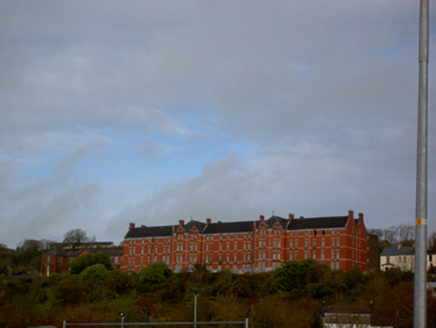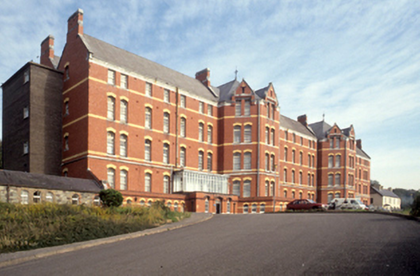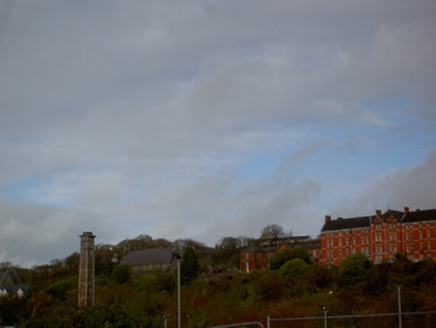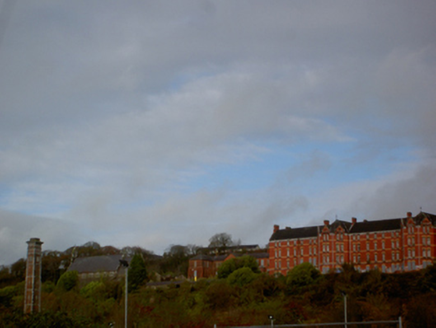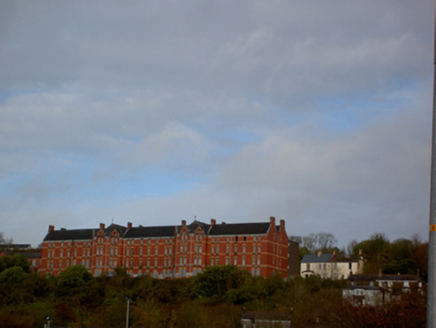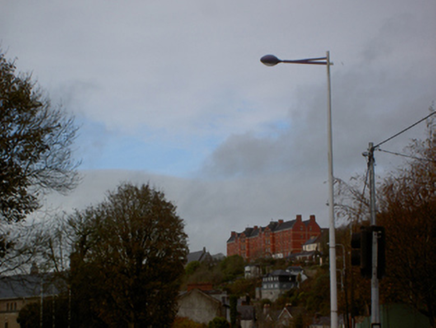Survey Data
Reg No
20865030
Rating
Regional
Categories of Special Interest
Architectural, Artistic, Historical, Social
Original Use
Hospital/infirmary
Date
1890 - 1900
Coordinates
165023, 71643
Date Recorded
20/11/2011
Date Updated
--/--/--
Description
Detached double-pile thirty-three-bay four-storey over basement former asylum having pair of full height canted six-bay projections with gablets flanking central five-bay section, built c.1895, now disused. Full height stairwell blocks to rear. Pitched slate roofs having red chimneystacks, limestone eaves course and cast-iron rainwater goods. Red brick walls with limestone and yellow brick string courses. Moulded terracotta string course between basement and first floor. Pointed arch openings, square-headed openings to top floor, having limestone sills, yellow brick voussoirs and multiple-pane timber sliding sash windows. Rubble limestone walls to rear elevation, with red brick dressing to openings. Disused detached five-bay two-storey house to west, having pitched slate roof, rendered walls and square-headed openings. Disused detached multiple-bay two-storey block to north-west, having central single-storey projecting bay, flanked by full-height gabled projecting bays, with projecting terminating end bays.
Appraisal
Designed by William Henry Hill to provide additional accommodation for up to 1,430 patients at the site, this building forms part of an extensive complex, which included a gate lodge, Church of Ireland church, Roman Catholic church, dinning hall, assembly room for fund raising activities and numerous related building. A link was built between this building and the main hospital to the south-west, which takes the form of an underground tunnel and a prolonged corridor like building attached to the west. Its red and yellow brick construction contrasts with the sandstone and limestone utilised for earlier buildings on the site, and makes it an eye-catching addition to the urban landscape. This large complex played a significant social role in both city and county in the nineteenth and twentieth centuries.
